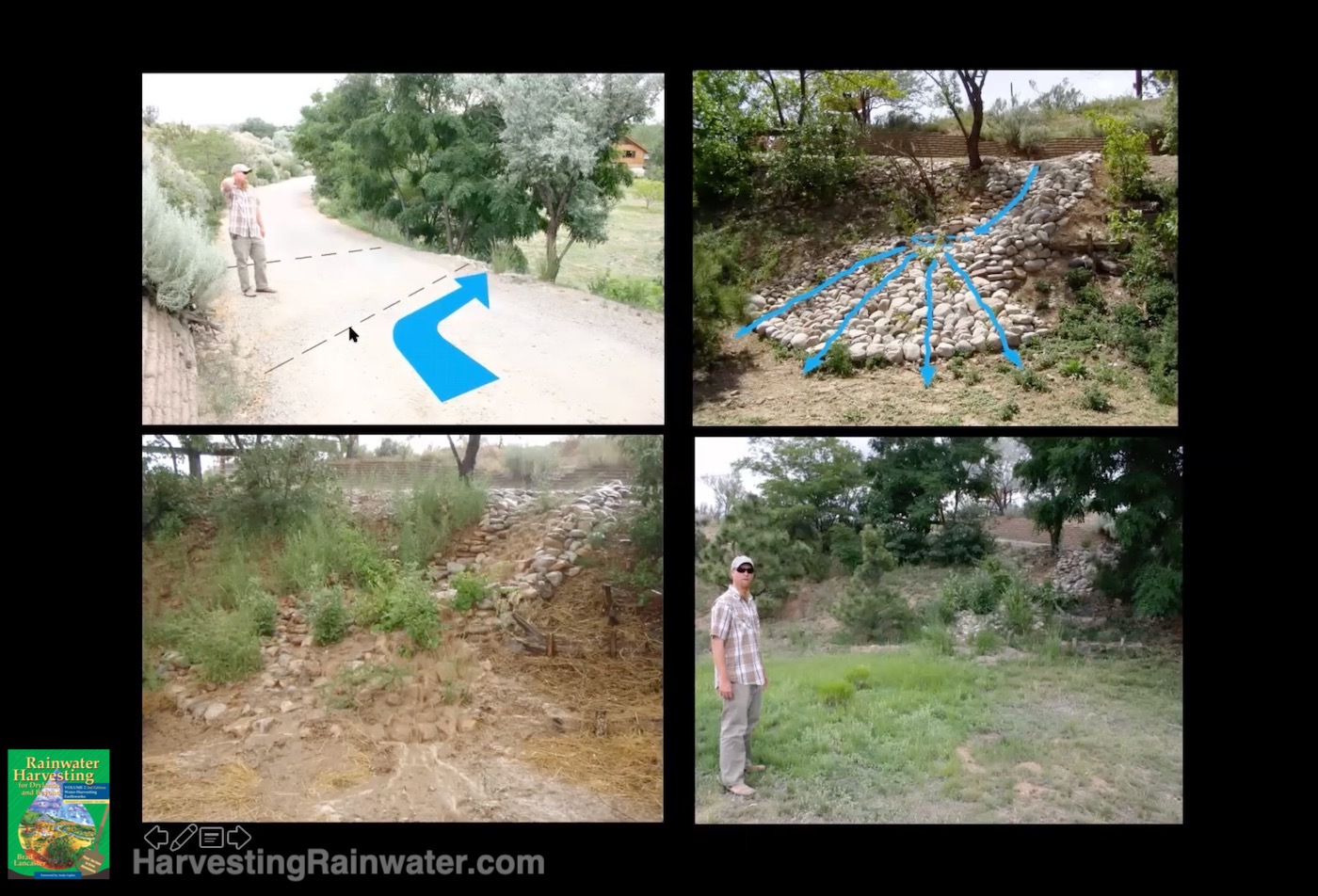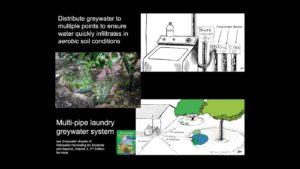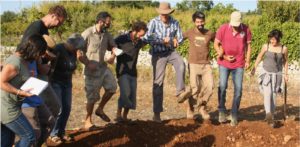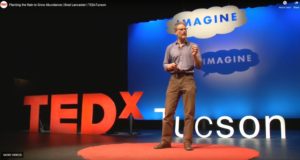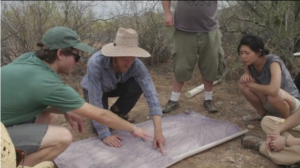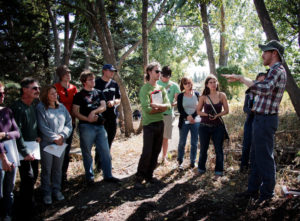Presentation for viewing: Evolutions in the planting of water and collaborating with life
$5.00
Brad Lancaster narrates this hour-long, 32-slide, power point presentation followed by questions and answers facilitated by Greg Peterson of the Urban Farm.
It can be purchased for viewing.
Upon purchase, you’ll receive the viewing link and password in your order receipt.
View as often as you like.
Description
This presentation narrated by Brad Lancaster begins with a story of how Brad got out of his own way when designing water-harvesting earthworks for a workshop at the Alpine, Texas library. Rather than try to make an unnecessarily complex design (made before getting to the site) work, Brad dramatically simplified the design and made it much more effective by working with the existing topography (instead of changing much of it). Right after completion of the simplified earthworks, a huge rain storm poured down, enabling us (and you) to see the beneficial results.
The presentation also shares:
• how we can collaborate & co-evolve with, and enhance, the living soil-carbon sponge to cool our overheating communities for free, enhance fertility, improve water retention & availability, grow bioremediation (natural filtration), and more!
• how organic-matter mulch is much more effective (and less expensive) than rock or gravel mulch within rain gardens
• vertical mulching
• how to create water-harvesting principles for work within water channels based on observation of natural flows of water and sediment
• how to use guiding principles more effectively (not as a checklist, but as a way to more consciously evolve)
• a number of simple strategies for harvesting water within water channels. Gone are the wired-wrapped gabions featured in the first edition of Brad’s book, and they’ve been replaced with simpler, less expensive, and more effective Bill Zeedyk- and Craig Sponholtz-inspired/informed strategies (featured in the new edition of Brad’s book) that can be built solely with free on-site materials.
• how simple one-rock dams have helped a dying wetland rebound and regenerate, and you can do the same.
• how induced meandering brought perennial water back to the creek at the Hubble Trading Post, recharge groundwater, and raise the bed of the once-down-cutting and eroding creek.
• how hybridizing different passive water-harvesting/management strategies to suit the unique challenges and potential of a site can dynamically regenerate its health
• how an eroding storm drain was transformed to a lively storm park
• the Speed – Depth – Volume pattern of water and sediment flow, and how you can use it to inform and evolve water-harvesting strategies (and their overflow) to be better adapted to the unique conditions of your site.
• plug & spread strategy and how it has regenerated an eroding wetland
• daylighting previously buried waterways
• how to turn stormwater runoff into stormwater runon to increase available rainfall
• evolutions of street-side street-runoff-harvesting rain gardens (NeighborhoodForesters.org for some of the ways this is being realized on a neighborhood scale)
• key elevation relationships within street-side water harvesting rain gardens, and how to use them to expand the capacity and effectiveness of your efforts
• in-street water-harvesting traffic-calming food-producing rain gardens
• working with municipalities to legalize, incentivize, and mandate regenerative water-harvesting
The presentation is informed by, and builds on, “Rainwater Harvesting for Drylands and Beyond, Volume 2, 2nd Edition,” which goes into more detail on how to design and implement these systems. Many of the images in the presentation are from this book.
You may also like…
-
Sale!
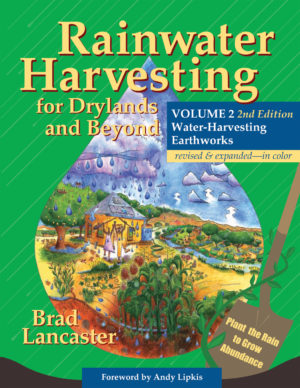
Rainwater Harvesting for Drylands and Beyond, Volume 2, 2nd Edition (NEW 2019) — Direct from, and signed by, author
Original price was: $49.95.$39.95Current price is: $39.95. Add to cart -

Presentation for viewing: Turning Wastes Into Resources with the integrated harvest of greywater, rainwater, and more.
$5.00 Add to cart

